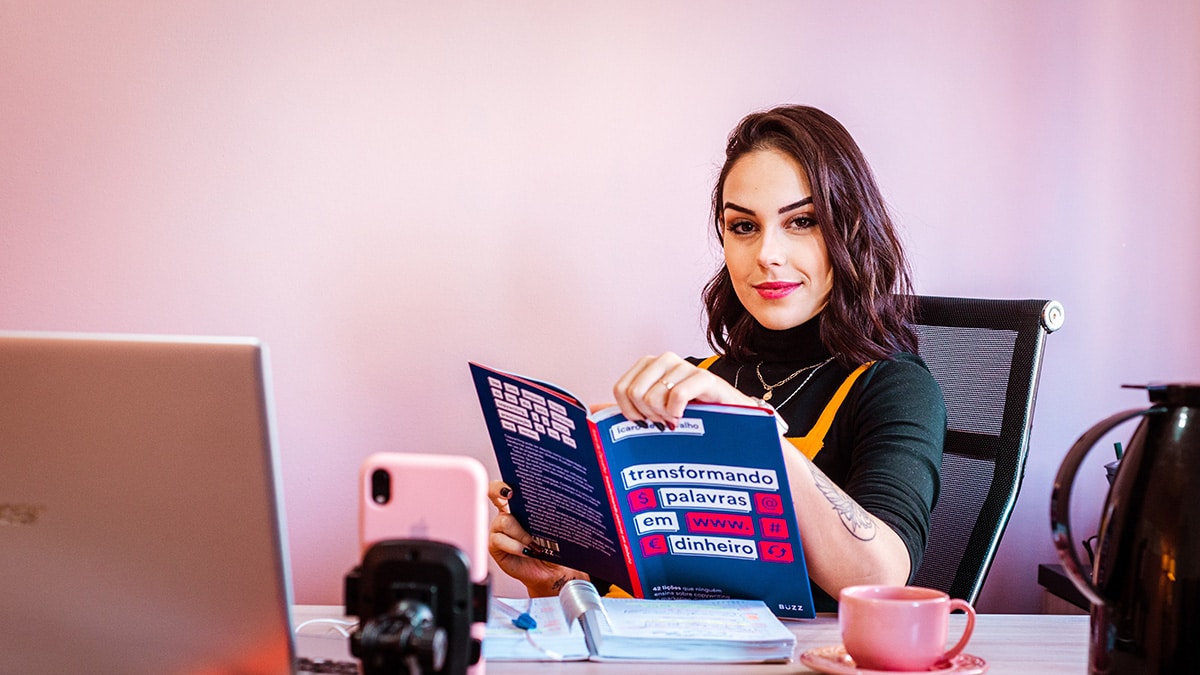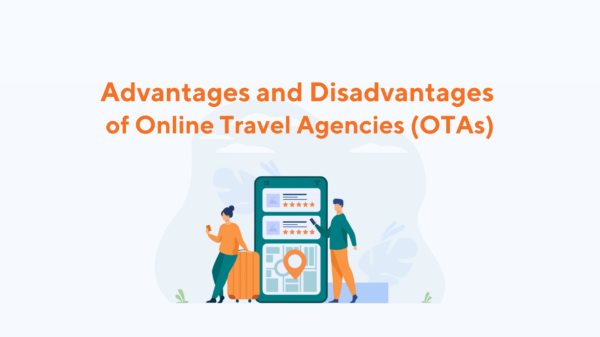There were only 361 million Internet users worldwide in 2000. Over 20 years later there are around 4.66 billion active users. Not everyone uses the Internet to buy things, but nearly half do. During the 2020 COVID-19 pandemic, the number of people using the Internet to make purchases grew by at least 20%, accelerated by the need to shop from home. That means that a large number of people who might have previously shied away from making purchases online may have changed their online habits for good.
For tour operators, the opportunity is clear. Not only does it pay to promote and sell your tours online, but optimizing your online presence will also help you to attract a steady stream of new customers and build a more successful tour operator business.
Here are 10 strategies for selling tours online—from optimizing your website to online video.
1. Build the best website you can afford
The days of stale, static websites that simply repurpose the company brochure are long gone or should be. Advancements in online technology mean there really is no excuse not to have a website that meets both customer and business needs.
Think of your website as your 24/7 online brand ambassador, customer service representative, and sales agent. As well as providing information about what you offer and helping people get to know your company and your team, an effective website answers every question a visitor might have. It guides them through their customer journey with you—from choosing the right tour to booking tours online via a booking system that plugs seamlessly into your carefully designed website.
An effective website should at minimum be:
Fast to load: A bloated website with pages that take too long to load will at best frustrate visitors and at worst drive them away. Site speed can also adversely affect your search engine rankings. Take a website speed test.
Easy to read: An unnecessarily wordy website is as bad as a slow website. Respect people’s time and present what you have to offer in a clear, concise way. You can be creative and insert some brand voice if appropriate. However, the most important thing is to be clear and use plain language, aiming for a Grade 8 reading level. That doesn’t mean “dumbing down;” it means improving readability. Test your website’s readability.
Useful: The main difference between a website and a printed brochure is that while people read brochures, they use websites. That means that effective websites must be user-friendly websites. They need to be built with the needs of your audience in mind and designed and written to meet those needs and help them perform specific tasks—including booking travel and tours. The quick and dirty way to test usability is by asking your website visitors to complete a survey using Survey Monkey or a similar tool.
2. Be easy to find
You could have the best-looking and easiest-to-use website in the travel industry, but if the right audience can’t find you on the web it won’t help you promote your tours. Search Engine Optimization, or SEO, helps you rank well in Search Engine Results Pages (SERPs) on Google or other search engines. SEO can get quite technical, but the areas to focus on include:
- Understanding the keywords and phrases your audience uses to search for travel topics relating to your business
- Optimizing the pages of your website, including metadata not visible to website visitors, using these keywords to push your website as high as possible in search engine rankings
- Optimizing how your website works, including how quickly the pages load, how mobile-friendly it is, and how it is structured
- Building “backlinks” to your website from other travel websites, including your social media channels or articles about your company on other sites
- Using website analytics to track how your target audience finds your website including the keywords they use and the sites they arrive from
You can analyze your website’s SEO using this free tool.
3. Advertise in the right places
Alongside optimizing your site for SERPs, another way to help the right people find their way to your website is more targeted Search Engine Marketing, or SEM. SEM is paid digital advertising. A typical SEM strategy might include some or all of these elements: text ads on search results pages, display ads on websites, Facebook ads and other social media ads, YouTube ads, and even advertising through a mail service like Gmail. The two main benefits are time and targeting. It can be much quicker and easier to appear in front of your target audience using paid advertising rather than relying on SEO. And you can target your ads so they appear to the right people at the right time, and in the right places.
4. Be accessible everywhere
The number of smartphones and other mobile device users is increasing alongside the growth of eCommerce. People take the Internet everywhere, which means they want to be able to shop for and buy things everywhere. An effective website should be “responsive,” which means it’s easy to access, read, and use on any size of the screen so you can promote your tours wherever your target audience is. People should also be able to book tours directly from their mobile devices. If your website doesn’t allow them to do that you risk losing customers who are ready to buy to competitors. Test how responsive your website is.
5. Nurture customers with email marketing
Not everyone books a tour on their first visit to your website. A booking system that helps you collect customer information, including all the necessary privacy requirements, can enable you to keep in touch. That way you can nurture them toward booking a tour when they’re ready to travel. As well as the more personal, targeted nature of email, probably its biggest advantage is how easy it is to automate everything from gathering email addresses to sending emails. That’s why email marketing has long delivered one of the best bangs for your marketing buck. The good news is people still love their email inboxes. We fire off 102.6 trillion emails every year, and that number is growing.
6. Build your social media following
Social media can be an excellent way to reach prospective customers and help them get to know your company. The key to using social media to successfully promote tour packages online is to be strategic about which channels you put the most effort into. For example, while Facebook has the most users of all ages, Twitter and Instagram tend to mostly attract people under 50. If you know your audience, you can make sure you create the right content for the social media channels they use the most. Remember, social media is about building relationships and engaging, rather than just promoting and selling bookings. You can also buy Facebook ads and other social media ads to help build your follower base.
7. Harness the power of influencers
Influencers are social media users with large numbers of followers, such as travel bloggers or Instagrammers. They’re called influencers because they can influence the buying behaviour of their followers. Professional influencers on Facebook and other social platforms work with tourism brands that are targeting the same type of followers. Some might promote your tour in return for a free trip, while others are paid through influencer agencies. For example, as part of your marketing strategy, you might invite a travel influencer on a new tour so they can blog about the experience to their followers, who should be the right audience for your business. Before joining forces with a tourism industry influencer to promote your tours, do your research to make sure they, and their followers, are the right fit for your brand.
8. Create video content around your tours
Watching videos is fast becoming one of the most popular activities on the Internet. According to research, 73% of US adults use YouTube—making it the second most popular social network behind Facebook. Research by Hubspot found that 78% of people watch online videos every week, while 55% watch them every day. All this means video should form part of your digital marketing strategy. Perhaps more than any other industry, the travel and tourism industry can generate a constant supply of video-friendly content—from country profiles to trip diaries to tour “trailers.” The attraction of video is obvious. It’s an effortless way for people to consume travel content and see what your tours are all about, with them needing to read a lot of copy. As well as YouTube, you can use Facebook and other social channels to promote and distribute your video content.
9. Create a content hub on your website
As well as posting content to YouTube, Instagram, and your other social media channels, consider creating a home for your content on your website, such as a blog. Regularly updating your site with articles, videos, and other content has two major benefits:
- Drive traffic from search engines and your social media channels to your website. Search engines like Google love fresh, high-quality content.
- Encourage visitors to spend longer on your site and return more often.
Adding a content hub to your website also lets you post “cornerstone” content to help with your SEO efforts. Cornerstone content is the most relevant, important, and useful content for your audience. For example, it could be a long article about one of your tours or a series of guides to the destinations you travel to or the experiences and activities you offer. Each piece of cornerstone content should be keyword-optimized with the aim of ranking well in search engine results pages. Usually, this is evergreen content that doesn’t go out of date quickly, but ideally, you should make sure to update it regularly to try to improve your search engine ranking. Facebook ads and other digital advertising can also drive traffic to your content hub.
10. Make it easy to book tours
Tour operators are in the business of delivering great experiences. That extends to your website experience. An online booking system is a major part of that. Imagine a customer reading about your tours on your website, getting excited, and deciding on the one they want to book. They’re ready to buy. However, the only way to book the tour is to call your office and it’s outside office hours. The customer now has to wait until the morning, or they can continue browsing and book through a competitor that does offer online booking. An online booking system meets one of the main needs of your customers, which is a convenient and easy way to book your tours.
Modern booking systems let you do much more than offer online bookings. Most offer a range of features that cater to both customer and business needs, including:
- A mobile app
- Mobile check-in
- Email marketing features
- Customized reporting
- Waiver management
The Rezgo booking system can help you both promote and sell tour packages online. It provides everything you need to drive more bookings and revenue, while also delivering a satisfying customer experience. Try a demo today to see the benefits for yourself.








